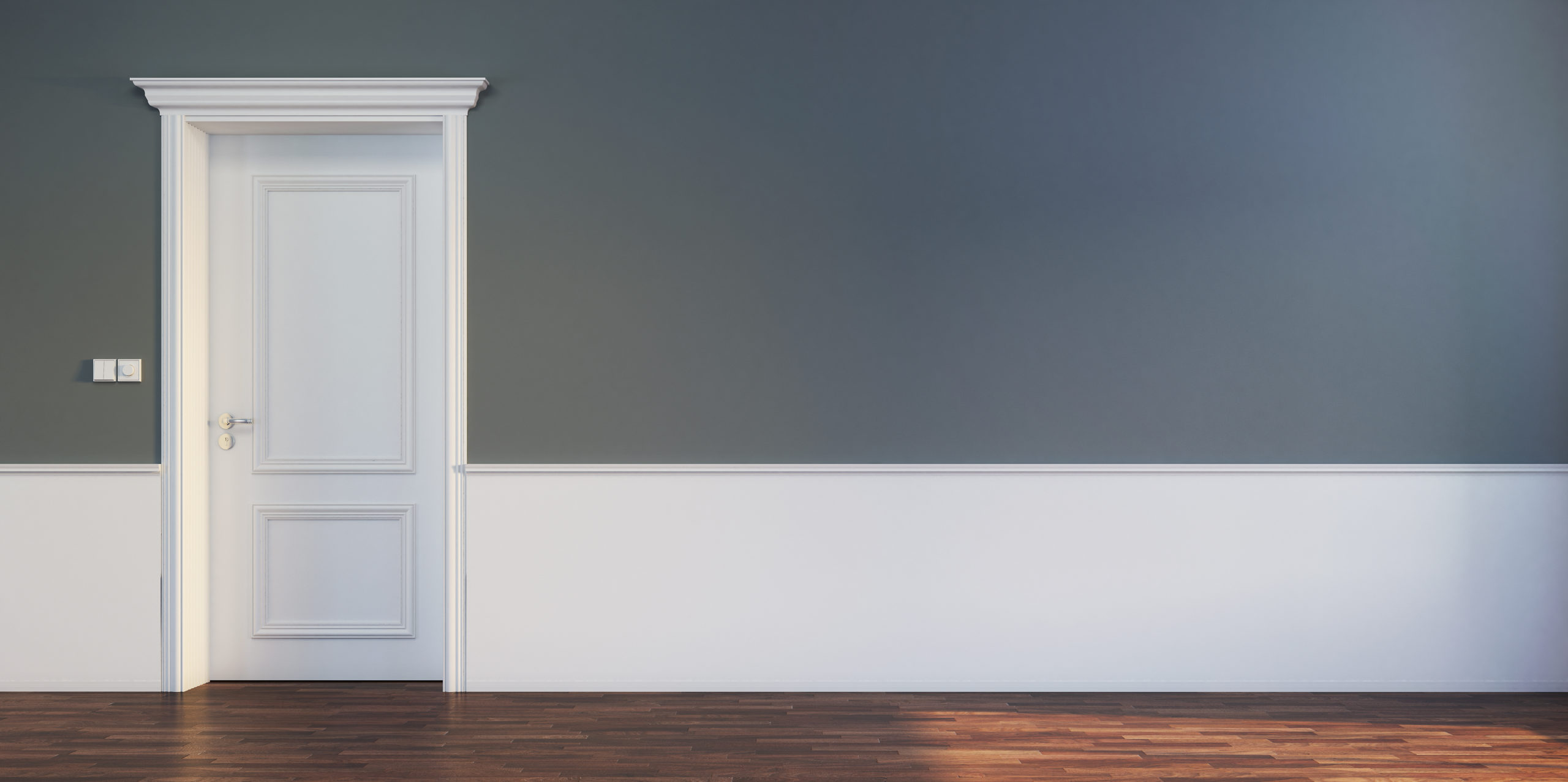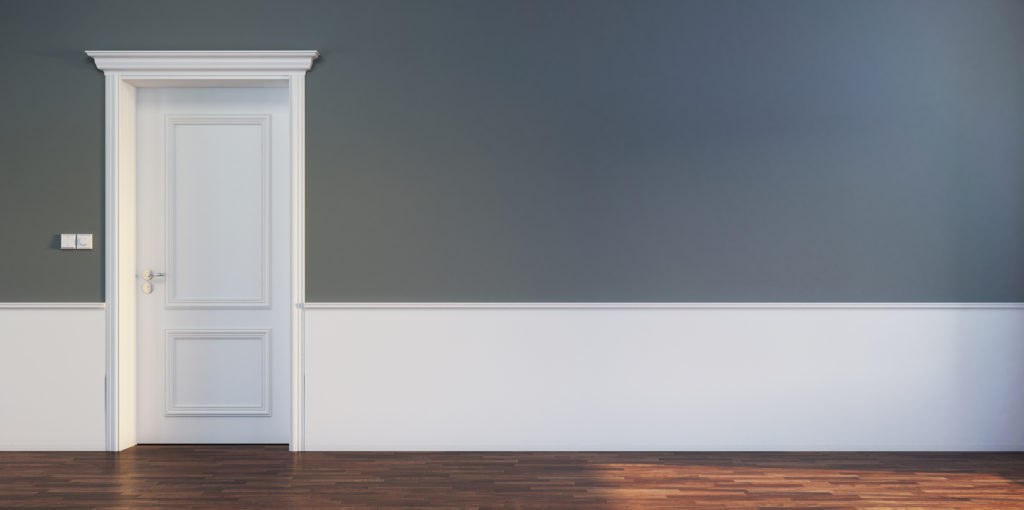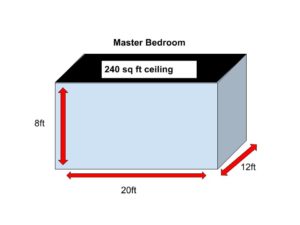
How to Bid/Estimate Interior Painting?

Here are two easy ways to put an interior painting bid together when you are starting out:
- Production Rates
- Man Days
Let’s start with Productions Rates
If you know your production rates, you can bid by square footage.
You know your square footage of a room, however:
Do you know how long it takes you to paint 200 square feet of wall space; cutting in and rolling?
Do you know how long it takes you to paint a chair rail; 30 feet of chair rail?
Do you know how long it takes you to paint a window sash; a six over one?
Of course, you can determine this if you use the history of your painting. You would start with logging times and what you are doing to the minute.
You can use a lot of online applications for this, a stopwatch, your regular phone.
But you want to start keeping a log of the actual work being done. This would give you production rates.
Production rates for someone else do not matter. The production rates that you do in your crew, if you have a crew, that’s what would be determining your production rates, and that’s how you would be bidding on jobs.
Therefore, asking someone else what they are charging and what they are getting really doesn’t matter because they are not yours.
Again, that’s if you are going to be bidding by production rates.
How about bidding interior painting by “Man Days”?
Secondly, you can do what I was taught way back when, as “man days” because we didn’t know any different. Now, this is not the best way to estimate, but in a pinch, it will work.
We would walk into a room and say, “Okay, this is going to take me two man-days to actually paint the room and I charge this much a man.” So that was a man day.
You can also walk around the exterior of the house and say, “Okay, this is going to take me 30 man-days to paint and I’m getting X-number of dollars per man-day.”
Either way, you still have to know your overhead.
You are going to have to know your salaries, you need to know your net profit on top of that.
There is a lot more that goes into it rather than pulling a number out of a hat of what you want to make per day.
Either way, make sure it’s very easy to read and presents well to a homeowner. Don’t use a scrap of paper or worse, just write a number on a business card. Use an estimating software to help you type up a nice estimate, including this free estimating program here. .
Using an estimating software or even a spreadsheet that you print out, will make you look professional. Especially if you can break the price down for the client.
Then you are actually giving the homeowner the change to say, “This is more than my budget, can we remove the closets?” ETC. You are giving the homeowner an option to not just dismiss your entire estimate but actually maybe take something off.
Or they realize that maybe they were thinking it was going be a lot less than it was; but, if they see it broken down like this, maybe they will just go for the whole estimate.
You also might be bidding against someone else who just puts “painting the master bedroom is x-number of dollars,” however, you have your price broken down this way which looks a lot more professional.
Let’s walk through an example of an interior bedroom
How to Estimate an Interior Bedroom:
- Find Square Footage to be painted and multiply by your labor rate. If you don’t know your labor rate you can find it here with our Free Bid Generator.
- Add in prep time
- Add in material
I picked a common/generic bedroom to bid for interior painting here, it’s a master bedroom; 12 by 20 with an eight-foot ceiling.
1. Find Square Footage for Painting the bedroom
We did 8 feet only because it’s easy to do the multiplication. So what we are going to do is 12 by 20, right there you have two 20 foot walls. What we are going to do is figure out by the hour that each one of these is going to take us to perform.
Now we are going to look at the ceiling. The ceiling is a 12 by 20, that’s a 240 square foot ceiling. How long is that going to take. I’m going to assume it will take three hours for one of my guys on the crew.
That’s cutting in and rolling just one coat. Let’s say we are just freshening up this room and walls.
We have the four walls, don’t forget the windows and door are in it, but we don’t take off for that “hole” because there is actually a lot more work when there is a window or door than when there is not.
One coat on all the walls in a 12 by 20 room. Say six hours. So right here we are going to take six hours to paint the walls in this room, one coat; but, what do we have here for trim?
We have two window trims. We are not going to paint the windows. We have trim around two doors. We are not going to count the doors right now.
So we have the window trim, the door trim, and then we have the baseboard that runs around the entire room. We are going to say it will take two hours to paint that.
We have the two doors we are only going to do one side each. We always pull the locks off of those doors anyway. I’m just going to add an hour for the two doors.
Here is one place where a lot of people make a mistake.
2. How to figure prep for the estimating of a bedroom
This is also where they lose money on the estimate… it’s the prep.
Are you actually factoring how many hours it will take to prep?

Prepping includes: moving the furniture, covering all the furniture with plastic, and sanding.
We also caulk as needed also spackle all the nail holes.
When I go in for an estimate I’m looking at about every single window and every single doorway for stress cracks.
I’ll also ask the homeowner if there are any surprises behind the bureaus, are there holes? Maybe their kid has moved a picture in their room numerous times.
It is smart to ask these questions because if you don’t, then when you are actually working, you open up the door and there is a hole where a door nob has poked through the wall. We are going to ask these questions because we are going to have to factor all these things in.
We are also going to put the room back at the end, so we are going to have to factor that in.
Based off of this, we’re going to add three hours for the prep. 15 hours to prep and paint this room.
Now, all you have to do is your hourly rate.
15 hours at $50 per hour is $750. That’s our labor charge to paint this room.
3. How to Figure the Paint Material for your Bid
Now we have to look for material. If you know the square footage of your material, and with most quality paint you have to get about three and a quarter, 350 square feet going over a pre-painted surface.
We’re only one coating it so it should go fairly well. So what we have over here is raw material.
For the wall paint, we are going to need two gallons because a 20 by 12 room is about 500 and something square feet.
One gallon usually covers three and a quarter, 350.
 We’ll leave the homeowner for the rest of the paint. Ceiling paint, 240 square so it’s a 20 by 12, it’s 240.
We’ll leave the homeowner for the rest of the paint. Ceiling paint, 240 square so it’s a 20 by 12, it’s 240.
So we need a gallon of ceiling paint and a gallon for the trim. If you want to leave the rest of the paint to the homeowner, you are more than welcome to.
Sundries, this is another last one.
A lot of people don’t account for what they are going to buy for sundries.
You have a roll a plastic in the truck, maybe you use it for multiple jobs but you don’t reuse it after you open it up.
So you maybe throw $10 or $5 in for the plastic. We are going to use two rollers, you are going to need a roller for the ceiling and you are going to need a roller for the walls. Even if you reuse your rollers, factor them in because one of these times you are not going to reuse it.
We are going to need a little spack or something like that. What I am going to do is throw $25 in for sundries, for a room like this.
I’m trying to keep it easy, I don’t want to get scientific or anything like that. So we are going to add $25 at the end.
What does a gallon of paint cost? We are going to put $45 dollars a gallon of paint. It’s kind of a mid-range paint. But we also want to make sure that we have a markup on that paint. So we are going to mark it up to $50 a gallon.
So we have two gallons of wall paint, a gallon of ceiling paint, a gallon of trim paint, that’s four gallons with $200 right there in materials and $25 in sundries. So we have $225.
All of that adds up to $950, so we can paint this room right there for $975.
So 12 by 20 room for the basics, it would be $975.
That’s to go through and make it look great, one coat, three hours worth of profit. If you have a lot of water damage and things, you are going to start adding some of that in on your estimate.
How to Present Your Painting Bid and get Paid Like a Pro
When you present the estimate, line item everything.
Don’t just put down what you are going to do and a price at the bottom.
Be specific, however, you don’t have to put what each thing cost if you don’t want to do it.
But be specific as to what you are going to present to the homeowner.
Also, when you go for the estimate, wear your nice work shirt.
Maybe a nice polo, maybe a nice jacket.
If you can have a chance to change out your painting clothes, all the better. They know you paint, you don’t have to prove that you paint.
You walk in there looking like a professional, presenting yourself as a professional, and you’ll be landing more jobs!
If you’re really serious about Doubling Your Business, profitably & without paying for leads…
then make sure you grab the free Bid Generator here.
But only if you’re seriously committed to great success.
Remember to Dream BIG, Hustle Smarter, You’ve Got this!


